Driving Icon's Million-Dollar Suburban
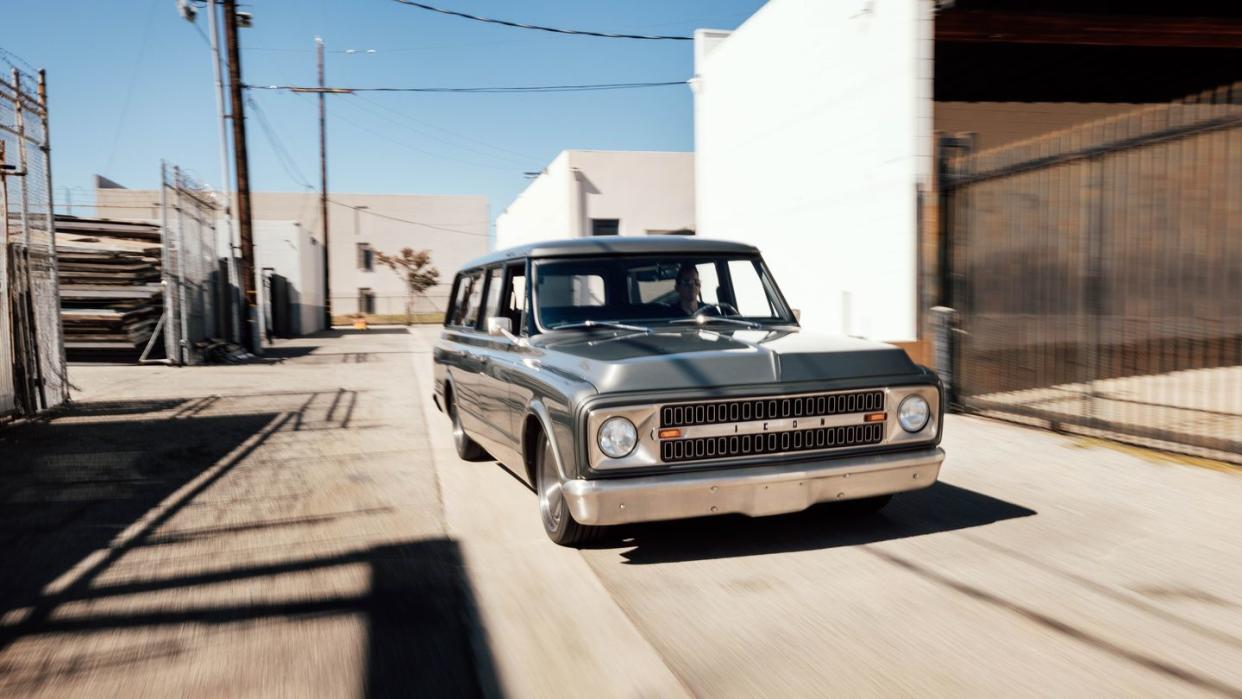

“Holy Schlitzer dude,” recalls Tom Nelson upon encountering this 1970 Chevrolet Suburban obsessively, excessively, and impressively rebuilt at Icon 4x4, “you look in the rear-view and that thing goes waaaaay baaack. It’s a huge-ass box.”
“Schlitzers,” holy or unholy, aren’t easily defined. But this thing? It’s Schlitzer from the bottom of its massive tires to the top of the sheet steel par five fairway that is its roof. There’s more than 1000-horsepower available from its twin-turbocharged V-8 (built by Tom Nelson’s Nelson Racing Engines), the chassis is the longest one Art Morrison Enterprises has ever built, and it’s finished with all the care and precision GM didn’t bother with back in 1970. It has also taken six years and about $1.1 million to construct.
“This is, I believe, the sixth Icon that we’ve built for this client,” says Jonathan Ward, the dude behind the dude fantasyland that is Icon. “And every time we build something for him, he pushes me out of my comfort zone in a new way. Which I’ve learned not to resist but engage. Because its fricking fun.” Yeah, okay, he didn’t really say “fricking.”
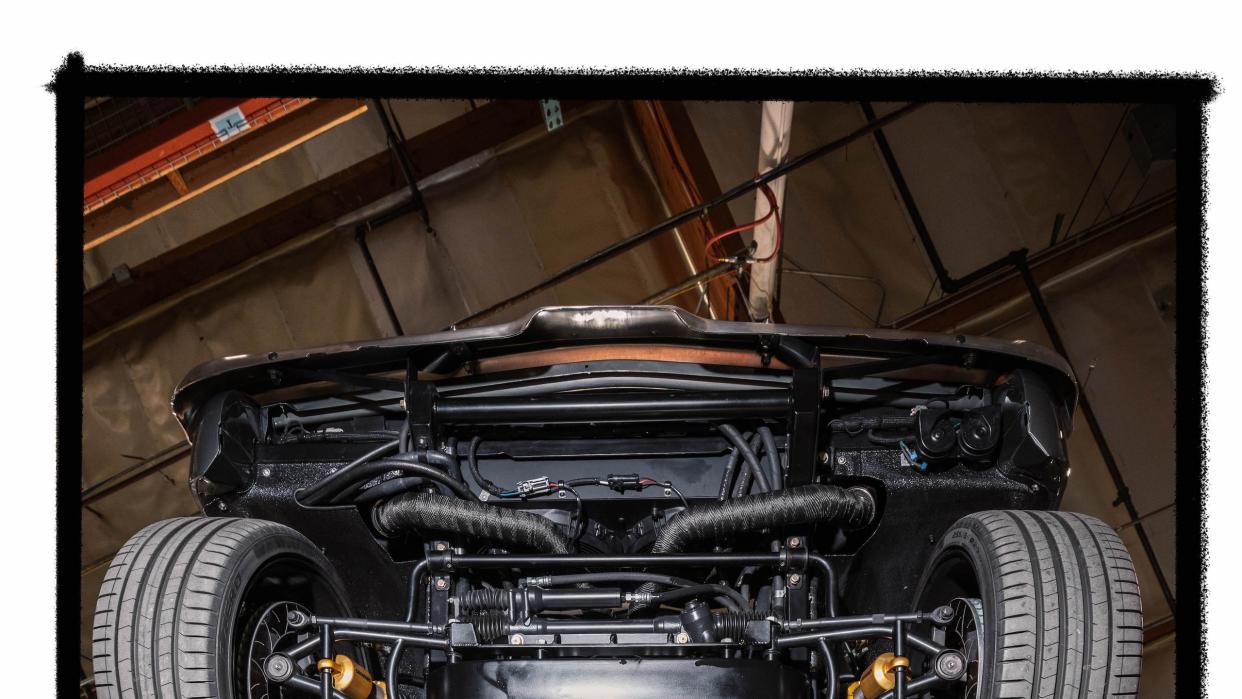
This isn’t a series production vehicle like Icon’s rubbed-on Ford Broncos and Toyota FJ Land Cruisers, but a one-off. It's a blow-out custom that Icon could duplicate for anyone, but why would anyone want to copy someone else’s fantasy? This is a truck that reflects the owner’s ambitions and passions. If this were an oil painting he’d be a “patron of the arts." Bring Ward a pile of currency, and his company will turn your notions and whimsy into something drivable.
This patron is Brett, an entrepreneur, who maintains a collection of about 30 vehicles around his home base outside Boston. He prefers keeping his last name out of print.
“I have an affinity for Group B stuff,” he explains, “and I’m not fond of the new stuff.” So once this 1000-horsey Sub is buttoned up and shipped to Massachusetts it will reside along such morsels as a Peugeot 205 T16 and an Audi Sport Quattro. That’s good company to keep.
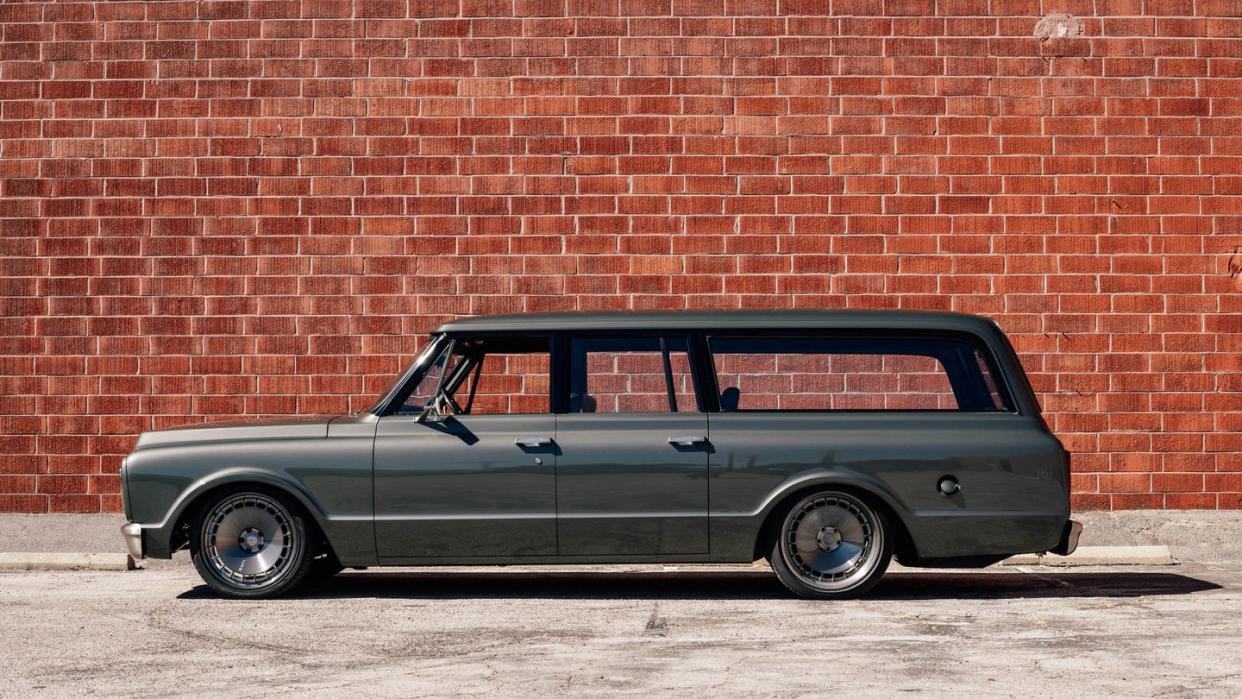
It also won’t be Brett’s only Sub. He has one of the Suburbans built by the late John Lingenfelter back in the Nineties powered by a 9.9-liter Mercury Marine V-8 rated at 550-horsepower. That’s back when 550-horses seemed like a lot. Now? Not so much. Still, awesome.
The 1970 Suburban is a member of the “Action Line” of GM trucks introduced for the 1967 model year and sold as both a Chevrolet and GMC. Compared to previous Suburbans, this generation was significantly longer and featured, for the first time, a third door on the right side for access to the second row of seats. Long as in a 127-inch wheelbase compared to the previous generation’s 115-inches. Don’t bother with the math, that’s a full foot.
And yes, this one has had a fourth door added to the left side. So, no, you’re not hallucinating. At least not about this. “The door was a cake walk,” Ward reports. “But the fricking B-pillar, we have probably 200 to 250 hours just in the pillar. To get all the gaps and hinge points to work well.” No, he didn’t actually say “fricking.”
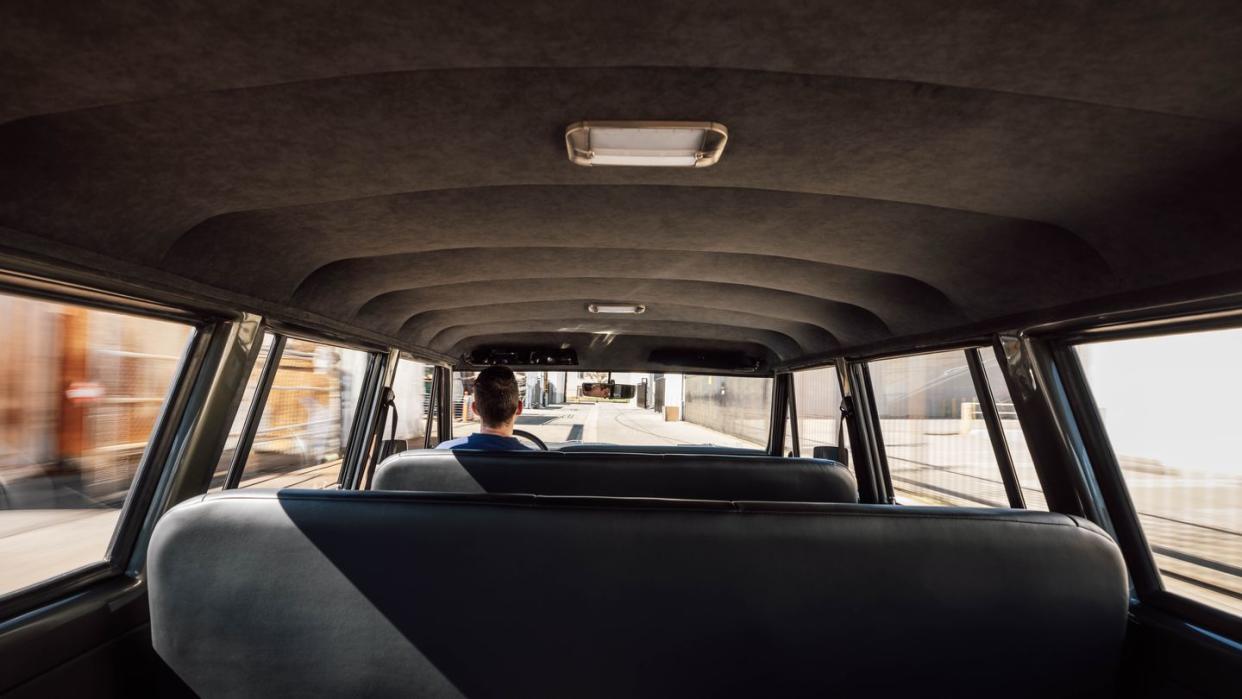
Riding low over its all-independent suspension (A-arms in front and Morrison’s own multi-link system in back), it has a startling and massive presence. Some of that presence comes from the fact that each body panel fits perfectly and tightly, and the paint looks deep enough to float swans upon. The original GM styling is amazing, but these things were originally thrown together with loose fit panel gaps and paint that oxidized almost immediately.
Ward and company didn’t screw with the styling. At least not much.
“For the vibe he wanted, I like to play revisionist history sometimes,” explains Ward. “To me, in that time, home audio, architecture especially, interior design, they were doing a brutalist post Bauhaus stuff. So, I decided to put myself in the shoes of Mies van der Rohe.”
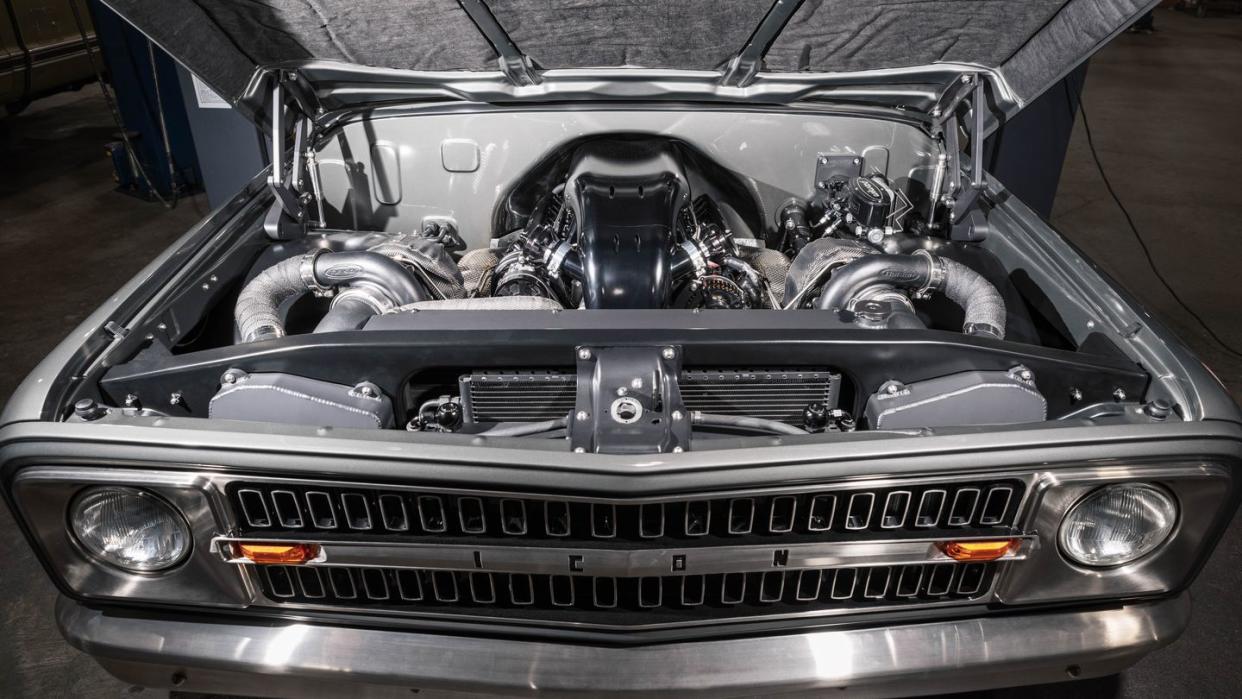
Van der Rohe is the architect most associated with the structural minimalist modernism (some would contend brutalism) of mid-century glass and steel buildings. The guy who comes to mind first with the phrase “less is more.” He passed away in 1969, near the time when the raw material that become this truck came off the assembly line at GM.
That strict architectural style is most evident in the grille, which is a solid piece of machined billet aluminum. The design of the grille itself is inspired by the GM original, but different in detail. The crossing bar continues into each headlight bucket while there are 20 rectangles above and another 20 below it. Naturally, the CHEVROLET lettering has been replaced by ICON. More subtly, the area surrounding the grille has been painted body color, so much of the mass is reduced.
“The bumpers are stock, except for the carriage bolt design,” adds Ward. “And the windshield wipers are stock.”
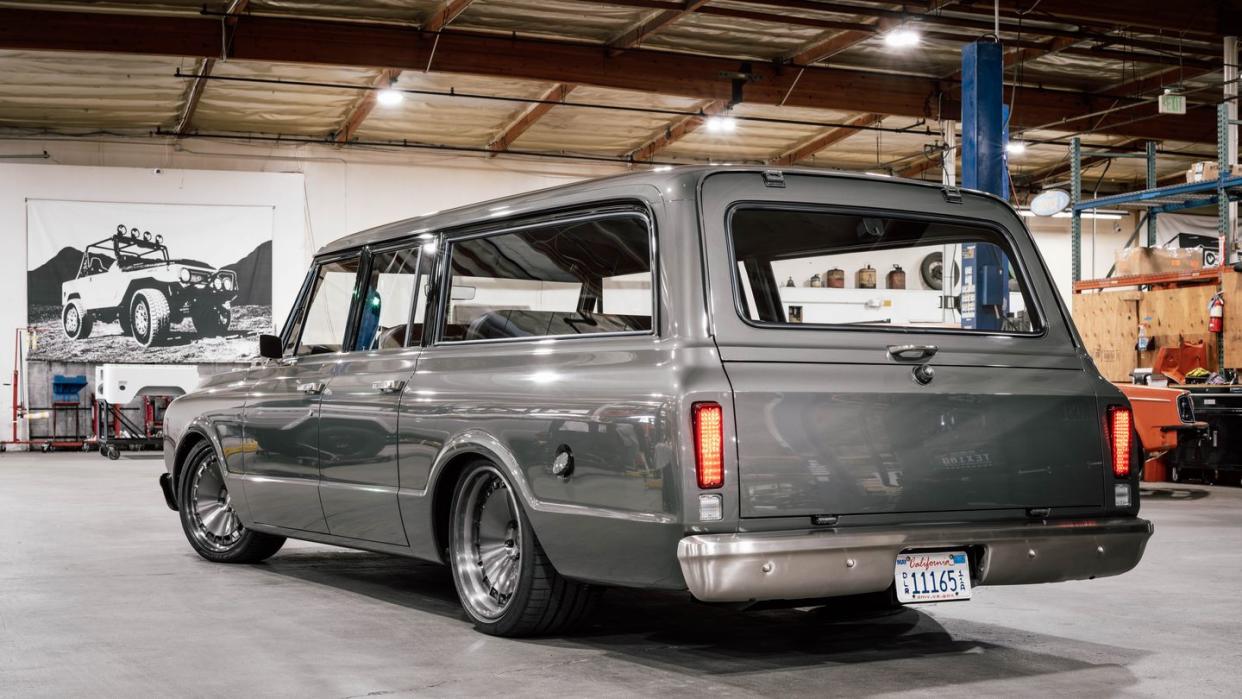
Ward was smart enough to not screw with what is right about the original design. No flared fenders, no ducts in the hood, no flames in the paint. It’s understated … almost to the point of not making a statement at all. Until it starts.
This is not a loud truck. It doesn’t so much bark to life as it does thrum. It's like the opening chord on an Apple computer that’s been converted to internal combustion. Then it settles into a sonorous gargle of an idle.
“That engine is a little smaller,” says Nelson about the iron-block V-8 in this Sub. “It’s like 380 cubic inches, but we’re only doing 427s now. It’s a GM LSX block with six-bolt main caps with Brodix LS7 heads.” The 64-millimeter turbos are mirror images of each other and they feed into Nelson’s Alien intake manifold where it’s fed by a gusher of fuel from the injectors. It’s all controlled by a Holley Dominator engine control computer directing a drive-by-wire throttle body. This isn’t a German production-style engine where the turbos are inside the vee of the block and everything is tuned for instant low-end torque and keeping the revs down for fuel economy. This is a state-of-the-art hot rod engine.
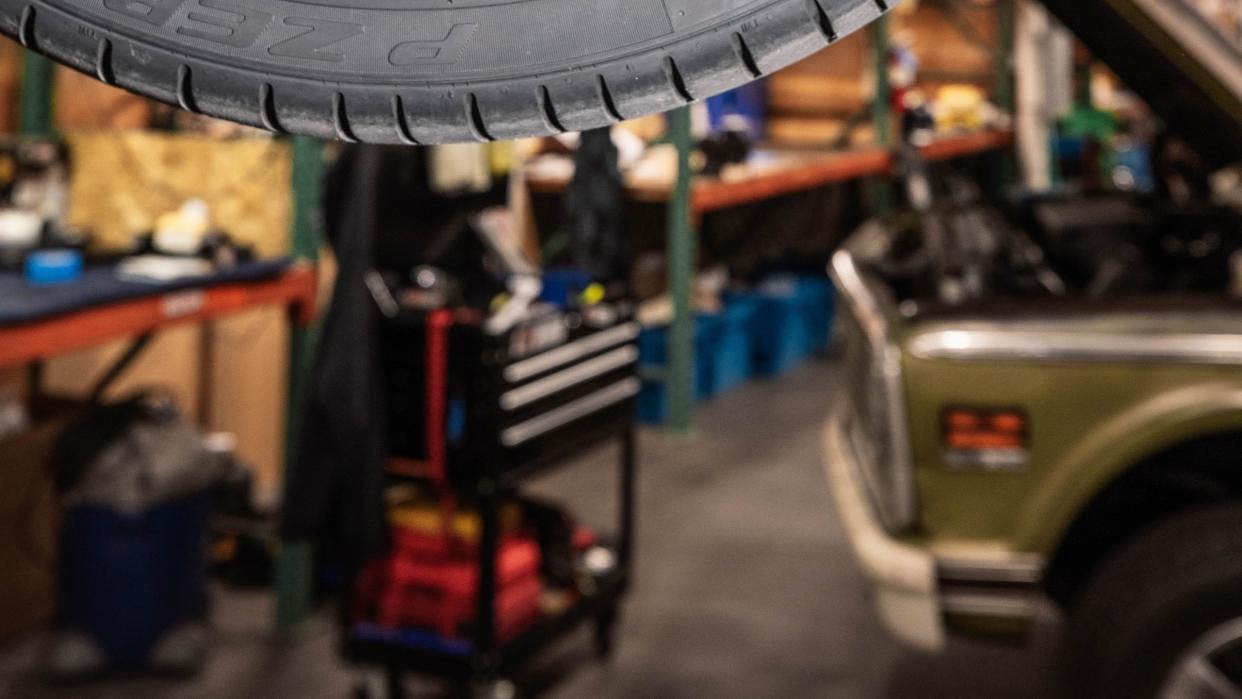
“This was done as a daily driver,” asserts Nelson. “It has a very mild cam. It will make 1000 horsepower on 91 octane and 1500 on race gas.”
There’s nothing particularly lush about the interior. Instead, it’s restrained and detailed. The basic shapes carryover from GM’s original design but executed with more lavish materials. The gauges are Dakota Digital which don’t look vintage, but don’t look out of place either. The luxury here isn’t in the Alcantara headliner or the one-off hardware trim. It’s the simple fact that there’s nothing else like it.
Safely, there’s a lot of travel built into the accelerator pedal so the drive can use the first several inches to loaf in traffic. It’s only when the pedal is nearly at the floor that the turbos spool up, the boost pours on, and this multi-ton missile rockets.
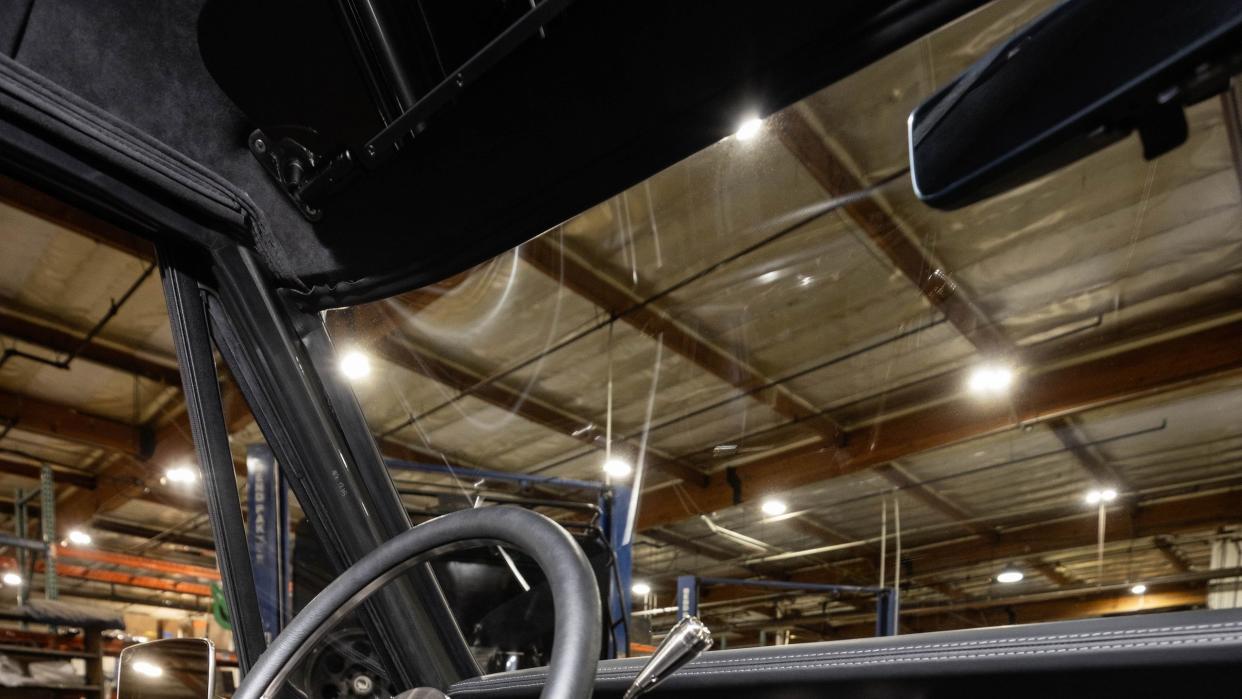
And it’s pure engine porn in the Sub’s nose. The engine is set back and low in the bay, at least five or six inches aft of where it would be in a stock GM truck. Not only does that improve weight distribution, but it also means there’s plenty of room for the turbo installation forward of the block.
There was no problem in clearing the firewall. It was completely fabricated at Icon along with the Sub’s floor and that second rear door.
Driving around the mean streets of Chatsworth, the industrial jewel of the San Fernando Valley, there wasn’t much chance to test the cornering limits of the chassis, but there were plenty of road divots to thump the suspension. And that the Sub did very well. It didn't sound like the inside of an oil drum being hammered, which is how a stock Sub would.
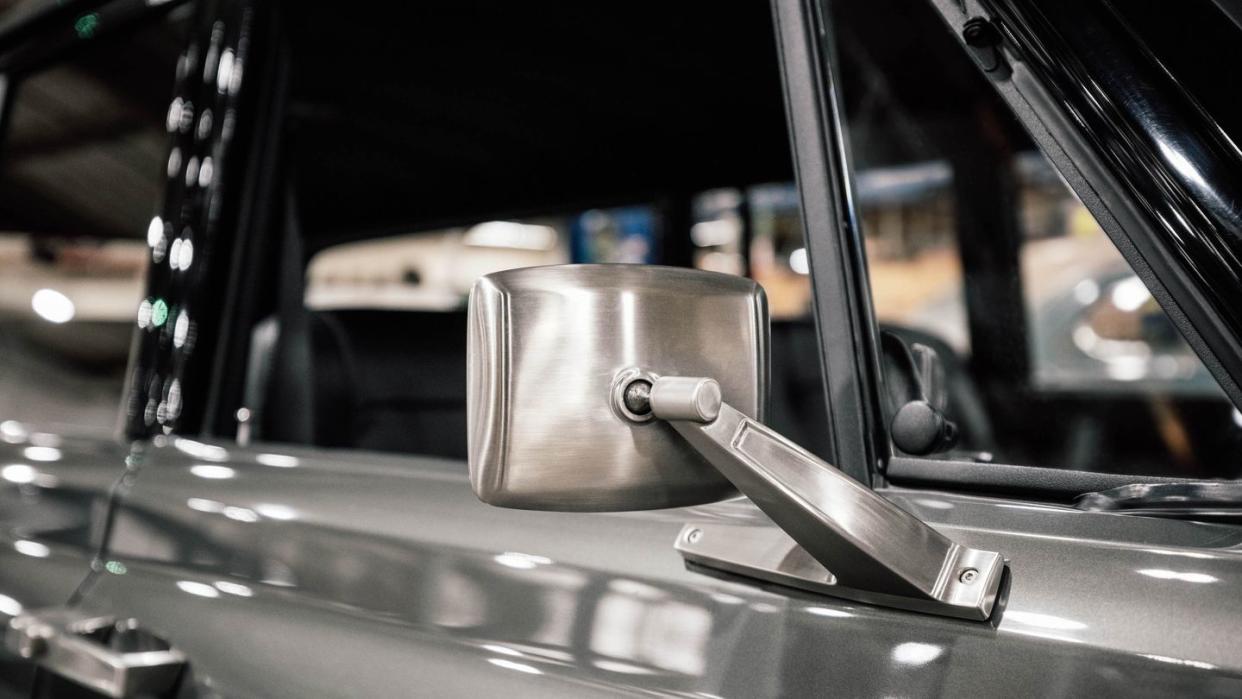
The front tires are 275/35R20 Pirelli PZeroes and, by the standards of custom cars, they’re relatively modest in size. The rears are 335/30R20 PZeroes, which are not modest at all. Because the front rubber isn’t absurdly oversize, the steering is relatively light with good initial turn-in.
Maybe surprisingly, the wheels are HRE production pieces and not specially-machined art. Maybe even more surprisingly, the wheels the truck uses five-lug hubs instead of six or eight fasteners.
Behind the engine is a fortified 4L85E GM four-speed automatic transmission. It’s not like eight or ten gears are necessary when there’s as much a 900 pound-feet of torque available.
Schlitz is beer that made Milwaukee famous. The Schlitzer could do the same for Chatsworth.

A car-lover’s community for ultimate access & unrivaled experiences.JOIN NOW Hearst Owned
Heading out onto the 118 freeway along the valley’s north rim, there were a few opportunities to let this thing heave up some speed. Since this is a rear-drive truck with monster power, it would be easy to break traction with the 335 tires with some injudicious throttle application. So whatever self-preservation sense that’s left in my body kicked in. Then the Sub kicked my ass.
This thing is a hoot. “Hoot” being a nice archaic word for badass, screaming mother. It obviously weighs a lot, so it’s not intimidating like, say, a V-8 powered Miata. It's also not obviously out to kill its driver like an early Viper, but it has to be respected. It's a pussycat down low out of boost, and a rabid elephant that believes it’s a 747 when the throttle is plunked.
Projects like this are one car development programs. Ward admits to the fact that his shop is still chasing heat issues under the hood (hence the thermal tape around the exhaust) and maybe three percent more damping on the shocks would be nice. But it’s already agonizingly close to feeling like the truck GM would build if it could with an unlimited budget and no need to make a profit.
In summary, it’s fun. Not for everyone, but it only must be for its owner, Brett.
You Might Also Like
